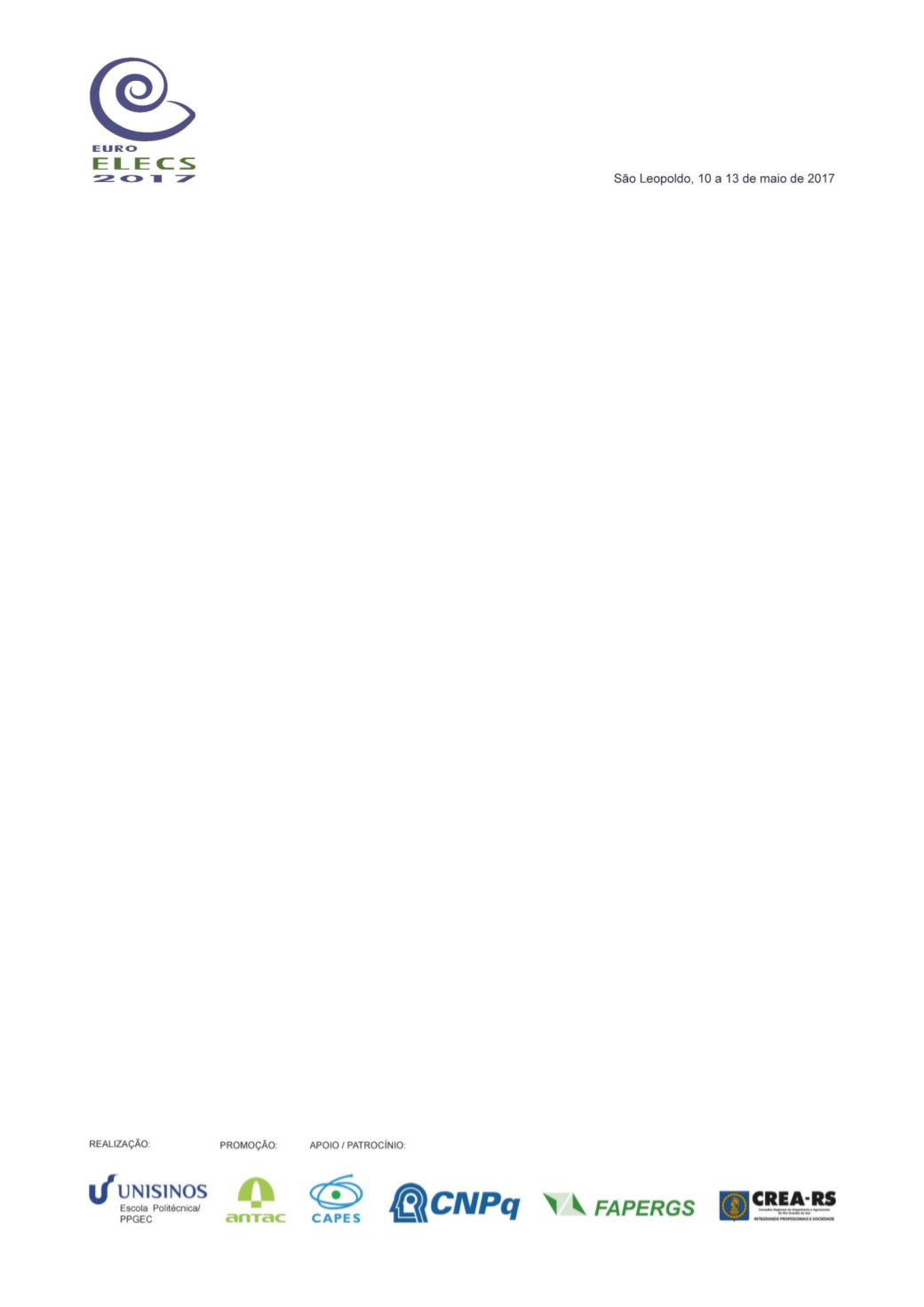

1237
5. AEFICIÊNCIADOS TELHADOS VERDES NO ESCOAMENTO DAÁGUA
PLUVIAL
HERMANN, Karin Daniela¹ (
karin.hermann@outlook.com); CAETANO, Marcelo Oliveira*¹
(mocaetano@unisinos.br); SILVA, Isabela da¹
(isabeladasilva0101@gmail.com), DAI-PRÁ, Léa
Beatriz¹
(biadaipra@gmail.com), GOMES, Luciana Paulo¹
(lugomes@unisinos.br)
1
Universidade do Vale do Rio dos Sinos (UNISINOS), Brasil
*
Autor correspondente
RESUMO
Uma das consequências dos processos de urbanização, refere-se à modificação do uso e ocupação
do solo. Destaca-se, principalmente, o avanço de áreas impermeáveis. Isto traz impactos
significativos ao equilíbrio hídrico dos municípios, ocasionando o aumento do escoamento
superficial das águas de chuva e frequentes inundações dos centros urbanos. A problemática
apresentada carece de soluções técnicas para controle destas águas pluviais, sendo este o tema
desta pesquisa. Desenvolveu-se um trabalho experimental que testou o desempenho de diferentes
tipos de telhados: telhado verde, telhado convencional com telhas cerâmicas e laje
impermeabilizada. O protótipo foi projetado e construído na cidade de Gramado/RS e objetivou
determinar o volume de água escoada nos diferentes telhados estudados. Os resultados
evidenciaram que as coberturas vegetadas, são mais eficientes na redução e retardo do
escoamento superficial. O telhado verde foi capaz de escoar 4,1% de toda a água precipitada
durante o período de estudo. Para a telha cerâmica o índice de escoamento foi de 34,8% e para a
laje de concreto a capacidade de escoamento foi igual a 56,8%. As análises de variância ANOVA e
Tuckey, considerando um intervalo de confiança de 95%, demostraram diferenças significativas
entre os resultados obtidos, atestando a eficiência do telhado verde em relação aos demais. Embora
esta eficiência, os custos de implantação de telhados verdes se mostraram superiores em relação
aos telhados cerâmicos e lajes de concreto.
Palavras-chave:
Telhado verde, Águas de chuva, Coberturas vegetadas.
THE EFFICIENCY OF GREEN ROOFS IN PLUVIAL WATER DISCHARGE
ABSTRACT
One of the consequences of urbanization processes is the modification of land use and occupation.
The advancement of impermeable areas stands out, mainly. This brings significant impacts to the
water balance of the cities, causing an increase in the superficial runoff of rainwater and frequent
flooding of urban centers. The problem presented lacks technical solutions to control these rainwater,
and this is the theme of this research. An experimental work was developed to test the performance
of different types of roofs: green roof, conventional roof with ceramic tiles and waterproofed slab.
The prototype was designed and built in the city of Gramado/RS and aimed to determine the volume
of water drained in the different studied roofs. The results showed that vegetated coverings are more
efficient in reducing and delaying the superficial runoff. The green roof was able to drain 4.1% of all
precipitated water during the study period. For the ceramic tile, the flow rate was 34.8% and for the
concrete slab the flow capacity was 56.8%. The ANOVA and Tuckey analyzes of variance,
considering a 95% confidence interval, showed significant differences between the results obtained,
attesting the efficiency of the green roof in relation to the others. Although this efficiency, the costs
of installing green roofs proved to be superior in relation to ceramic roofs and concrete slabs.
Keywords:
Green roof, Rainwater, Vegetated covers.


















